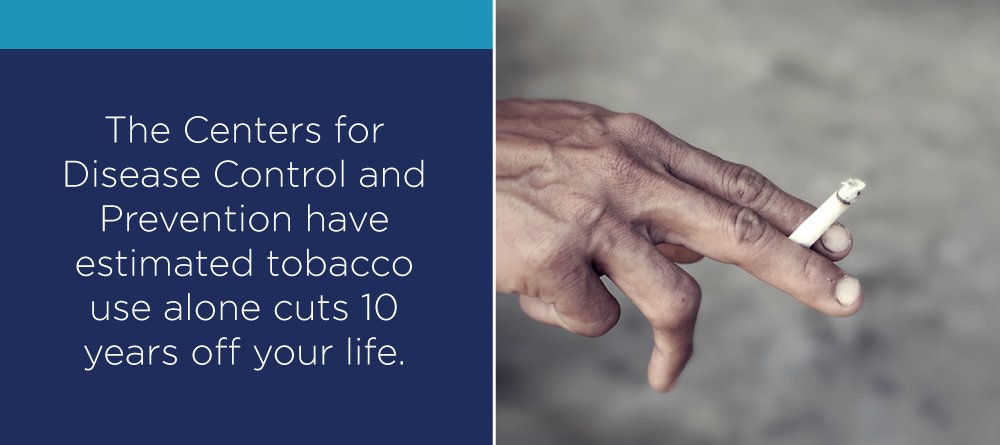
We know what you’re thinking — why should I get life insurance in my 20s? In your 20s, you may be purchasing your first car, renting your first apartment or buying your first home — plus, you’re getting your first job and navigating monthly bills with your new paycheck. Yes, you have spare change, but research by LIMRA, a worldwide research, consulting and professional development organization, shows life insurance isn’t exactly your priority.
Approximately 29 percent of millennials are using their spare change to save for a vacation, while 23% of Gen Xers use theirs for recreational activities — all over life insurance. Now that you know how other millennials are spending their money, you’re probably still wondering, “should I get life insurance in my 20s or 30s? Read on to learn more!

We get it. The last thing on your mind is death. You’re young and in good health, so barring any unforeseen tragic accident, the chances of you passing away are slim.
However, we also know the fact that you’re young and healthy means you’re eligible for the cheapest life insurance rates. Through LIMRA’s research, we’ve learned millennials overestimate the cost of life insurance by 213%, and Gen Xers by 119%. The reality is, getting life insurance in your 20s almost always gets you locked into the cheapest rates. Depending what type of life insurance you choose, it could also supplement your income for significant life events.
Before we share the reasons investing in life insurance at an early age is wise, it’s important to understand the fundamental difference between the two main types of life insurance — whole and term.
Whole vs. Term Life Insurance: What’s the difference?
Whole life insurance comes with a cash value. You’ll pay more in monthly premiums, but that’s because some of that money is set aside to accrue interest, tax-free. Over time, that cash value grows, and it’s accessible for you to use if you need it.
On the other hand, term life insurance covers you for a set number of years, which you determine when you purchase the policy. You do not get the cash value with term life insurance, hence the fact that you pay less in monthly premiums. In both types of plans, upon your death, the life insurance company would pay the amount you’re covered for to your beneficiary.
Why You Should Get Life Insurance at a Young Age
1. Life Insurance Is Cheaper If You’re Young
We’ve told you the short answer to “should I get life insurance in my 20s?” is yes. But to learn why to get life insurance in your 20s, you must understand how the insurance business works. When an insurance company is assessing you as an applicant, it’s looking at risk — the risk they’ll have to pay out the sum of money you have in your coverage. When it comes to life insurance, the biggest risk is your death, at which point the insurance company has to pay out a benefit to your beneficiary. However, death isn’t the only risk in life insurance.
Another risk to the life insurance company is life insurance policy cancellations. Once you have life insurance, you’re able to cancel it at any time. The goal of a life insurance company is to have you as a policyholder for as long as possible without having to pay out. Life insurance companies want you to live a long life.
For both whole and term life insurance, your 20s to 30s is the best time to get life insurance. Whole life insurance has a cash value that is collecting interest tax-free. The earlier you start a whole life insurance policy, the longer that cash value has to grow, giving you more money to draw from for major life events and eventually, retirement.
Term life insurance covers you for a certain number of years. If you purchase when you’re young, barring any other health factors, you’re considered a low risk to the life insurance company. Low risk translates to cheaper monthly premiums. Here’s why: If you’re in your 20s and purchase term life insurance for 30 years, the chances of you dying by the time you’re 50 are less than if you waited until you’re 40 to purchase. At that point, you’re considered to be a higher risk because there’s a higher chance of you dying by the time your 70.

Does all of this mean there’s no point in purchasing life insurance if you’ve crossed the 30 years of age mark? Not at all. While you’ll usually have access to the lowest rates in your 20s, the bottom line when it comes to age is the sooner you get life insurance coverage, the better.
2. Life Insurance Is Cheaper If You’re Healthy
Take your age out of the equation for a moment and focus specifically on health. Since life insurance rates are primarily calculated based on the risk of your death, it’s easy to see why it would be cheaper for a healthy person. Healthy people are assumed to have a lower risk of death. As you get older, you’ll likely have more health risks — whether it’s weight gain due to an aging metabolism or a chronic condition. Therefore, in most cases, the younger you are when you apply for life insurance, the better health you’ll be in, and the lower your rate will be.
Part of the life insurance application process is a physical, because the insurance company wants to assess your life expectancy, with the help of your doctor. If you’re in optimum health, you’ll be deemed “preferred plus” by the life insurance company, qualifying you for the lowest rates. Let’s assume you decide to apply for a life insurance policy — what are the health factors they’re examining? Just because you’re a young adult doesn’t mean you’ll automatically be in the preferred plus category.

Here are some of the things they’re looking for, and how your young age can be an asset:
- Tobacco, Alcohol or Drugs: If you smoke, drink or use recreational drugs, the time to quit is now. These three habits will knock you out of the preferred plus category — mostly because the Centers for Disease Control and Prevention have estimated tobacco use alone cuts 10 years off your life. It will undoubtedly save you money if you ditch these three.
- Obesity: If your height to weight ratio shows your BMI is in an unhealthy range, it will negatively affect your premium. Obesity can lead to several other health issues with age. People typically have a more active metabolism when they’re younger, leading to healthier weights, less chance of obesity and lower premiums.
- High Blood Pressure: This is another condition that usually develops with age. However, it’s important to note that drinking too much coffee or an intense workout won’t help your blood pressure. If you apply for life insurance, make sure you lay off the coffee for a few days before — and the intense workout a day before — so you don’t skew your numbers.
- High Blood Sugar: Life insurance companies are looking for signs of diabetes when it comes to high blood sugar. Young people usually don’t have to worry about high blood sugar, but as you get older, even being on the verge of diabetes can affect the cost of life insurance premiums.
Even if you aren’t in the preferred plus category, chances are your health will come in at a better level at your age now than it would ten or 20 years from now. That translates to cheaper life insurance rates, even if you can’t make the optimum health tier.
3. Life Insurance Can Prevent Your Debt From Becoming a Relative’s Burden
We’ve reviewed two factors that can significantly reduce your rate at a young age, which are both great selling points, but even taking into consideration the small investment — why do you need it? Another compelling answer to this question is debt.
What happens to your student loan balance when you die depends on the type of student loans you have. Federal loans are eliminated, but private loans don’t come with that guarantee. It’s important to know the policy for each of your student loans. If your parents took out Parent PLUS Loans, they are in one or both of your parents’ names. Therefore, even though the loan was taken out to cover your education, it will not be erased if you die — instead, your parents would have to continue paying the loan.
Through life insurance, you can cover your student loan debt. Since your student debt bill is highest when you graduate from college, the best time to get life insurance is after graduation.
Similarly, once you’re in your late 20s and early 30s, chances are you’ll accumulate more debt in the form of a mortgage. If you purchase a home and take out a mortgage individually, your estate and your heirs become responsible for the cost of your home when you pass away. If you and a spouse or significant other take out a mortgage together, as co-borrowers, and one of you dies, the other becomes solely responsible for the mortgage. Having life insurance can cover the cost of your mortgage and significantly reduce the stress and financial burden on your loved ones if you unexpectedly pass away.
While student loans and mortgages are two of the major sources of debt you accumulate at a young age, others can add up. Credit card debt, car loans, personal loans and other types of debt may have different terms for the death of the insured person. It’s possible in these cases that the debt gets passed on to your spouse, or heirs to be covered by your estate — the assets you have when you pass away. Regardless of how much these additional sources of debt add up to, having a life insurance policy to cover them in case you die unexpectedly is smart.
Unless you have no debt or know your debt is forgiven by the loaner at death, debt is a compelling reason to get life insurance in your 20s. Debt can also be helpful in deciding on an amount of coverage. If you want to make sure you protect your family members from having to take on the burden of your debt if you pass away, you can make sure you have coverage for an amount that’s greater than the debt you have.
Group vs. Individual Coverage: What’s the Difference?
At this point, you may be thinking you have life insurance as a part of your employer’s benefits package — this is known as group coverage, and it’s a great start. The problem is that group coverage usually doesn’t take into consideration any of your unique life situations — like your family or debt. Group rate coverages are often in the $25,000 to 50,000 range, or are the equivalent of your yearly salary. It’s solely meant to cover a portion of lost wages due to your death. Individual life insurance coverage, on the other hand, takes a comprehensive look at your entire life situation to ensure protection for you and your loved ones.
You may discover the answer to what coverage will be best for you is a combination of both group and individual coverages. A group policy through your employer can be a starting point, and once you decide the amount of coverage you’d like to have, you can apply for an individual policy for the remainder of the amount. However, it’s important to note there is no one-size-fits-all answer.
Best Life Insurance Policies for Young Adults
Once you’ve decided you want to pursue a life insurance policy, the next step is figuring out the details. What type of life insurance coverage do you need? How much coverage should you have? What will the cost be? LIMRA’s research shows consumers are intimidated by the process of purchasing life insurance — with four in 10 people admitting they don’t know how much they need, or what to buy.

At Strock Insurance, we know the process of finding and purchasing life insurance can be overwhelming. However, we don’t want that to get in the way of getting you the coverage you need to protect yourself and your family in the case of an unexpected event. We’re here to help you navigate the process.
This might be the first time you’re purchasing insurance, but we’ve been helping people get the coverage they need for over 30 years. We work with people of all ages in Lebanon, Camp Hill, Harrisburg and the surrounding areas in central PA to secure affordable life insurance policies that protect them and their loved ones.
Our process starts with us learning more about you — yes, your age and health are essential, but we also want to know about your loved ones and your financial situation. Remember, to ensure you’re getting enough coverage, you need to consider your spouse, heirs, children and the amount of debt you have in your mortgage, loans and credit cards.
Once we’ve learned about you, we can make suggestions about which type of life insurance might be best for you, as well as an amount of coverage. As a leading insurance agency in the region, we work with a variety of insurance companies to find the most competitive prices and the best coverage on the market. Start today by requesting a free life insurance quote on our website.
